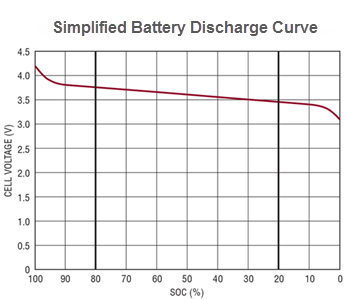By Michael Worry | Oct 15, 2014
I was participating in a panel discussion about battery management system (BMS) design at the 2014 Battery Show in Novi Michigan and was asked for some of my opinions around State of Charge, State of Health, and State of Life measurement for large-scale batteries. While I was presenting Nuvation’s battery management system at our booth on the exhibition floor, similar questions came up again a few times, so I thought I would share my answers here.
– Michael Worry, President and CEO, Nuvation Engineering
Q: Is it best to have your battery management system balance cells based on voltage or State of Charge (SoC)?
MW: It depends. If a cell is in a section of the voltage curve where there’s a strong relationship between voltage and stage of charge, then voltage will give you better accuracy for balancing decisions. For a lithium battery this would be at either the low or high end of the charge, because in those states there is a relatively steep change in voltage for a small change in state of charge.

Q: There are so many papers written on battery state of health (SOH) and state of life (SOL) calculation. What is the best technology we currently have on those two battery management measures?
MW: This is where one would use voltage for an absolute correction on state of charge. On the other hand, if a cell is operating continuously in the middle range of the battery – say 20% to 80% – then the voltage curve is pretty flat. In fact it gets swamped by the hysteresis of the voltage skin effect that occurs when switching between charging and discharging. So in this case, battery cell balancing decisions should be based on the per-cell state of charge information.
The best one I have seen is a frequency response algorithm. A partner of ours, Global Energy Innovations, have a product called CELScan which measures the electrochemical impedance characteristics of a battery over a range of AC frequencies. This allows one to predict a catastrophic battery failure well in advance; it can begin predicting failure when a battery starts to fail. Without that predictive state of health, a failing cell can degrade the performance of the entire battery. For example, in a lead-acid battery CELScan can detect dry-out and sulfation before that even shows up in voltage and current characteristics, and basically provide a “soft warning” that the battery needs to be replaced, in advance of that failure jeopardizing system reliability. That’s the best I have seen in terms of measuring life fraction.



